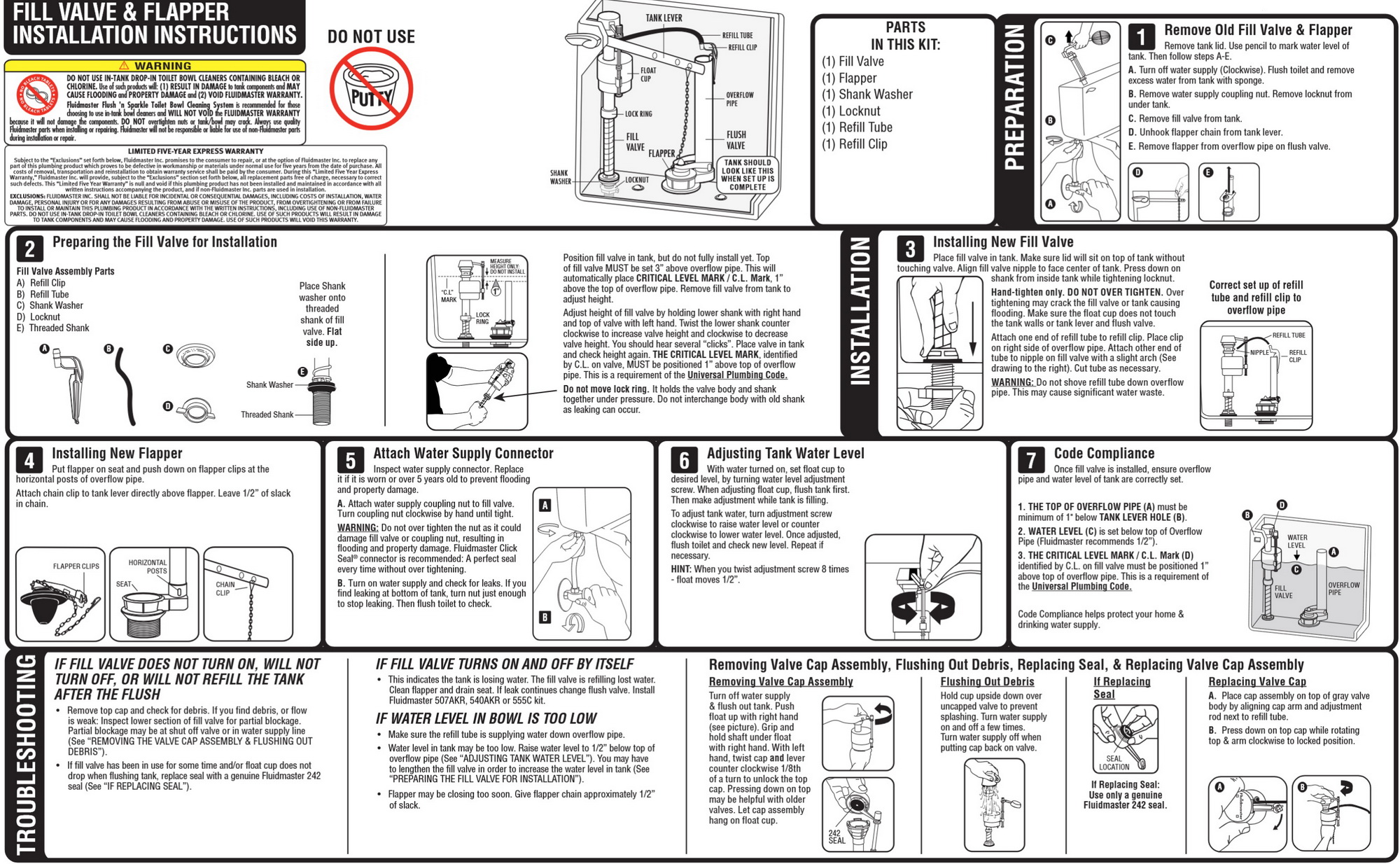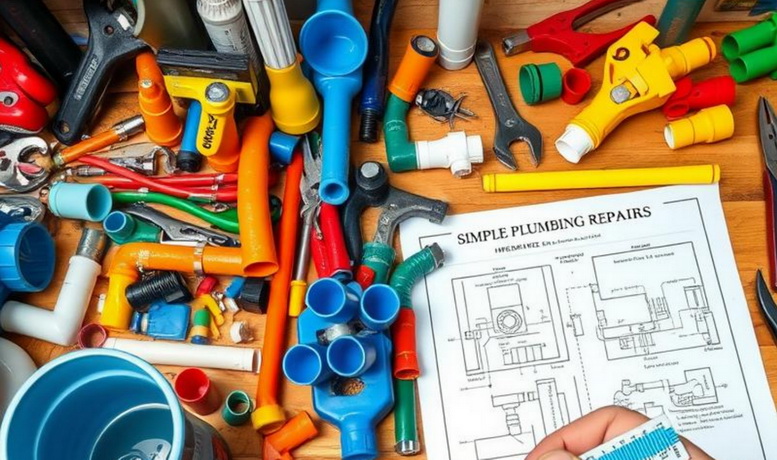Leaks and clogs are common in homes. But, calling a plumber every time can cost a lot. You can fix these problems yourself with some basic skills and tools. This article will give you DIY plumbing tips. You’ll learn how to fix leaks and unclog drains without a plumber. By using simple home plumbing solutions, you can save money, time, and avoid frustration.
Plumbing Pointers
- DIY plumbing tips can save you significant money and time.
- Knowing how to identify leaks and clogs is key for home plumbing solutions.
- Simple tools like plungers, wire hangers, and baking soda can solve minor plumbing issues.
- Knowing when to call a professional plumber can prevent bigger damage.
- Preventive maintenance is important to avoid future plumbing problems.
Understanding Common Household Plumbing Issues
Knowing how to fix common plumbing problems can save you time and money. We’ll look at two big issues: leaks and clogs.
Identifying Leaks
Homeowners should watch for signs of leaks. Dripping faucets waste a lot of water. A drip calculator can show how much a leak costs.
Water stains on ceilings or walls mean there’s a leak somewhere. Unusual sounds, like dripping or a running toilet, are also signs. Running toilets can waste up to 200 gallons a day.
Using frost-proof hose bibbs can stop leaks in spring and summer.
Common Causes of Clogs
Knowing why drains clog is key to keeping plumbing working well. About 15% of plumbing issues are clogs and slow sinks. Hair, soap, and grease are the main reasons.
In kitchens, food and grease cause clogs. In bathrooms, hair and soap scum do the same. Knowing these causes helps prevent problems.
By understanding plumbing issues and their causes, homeowners can fix problems early. This saves money and keeps plumbing working right.
Simple Methods to Unclog Drains
Clogged drains are a common problem at home. You can fix them yourself with simple methods. Knowing how to unclog kitchen and bathroom drains helps keep your pipes clear. Here are some easy DIY techniques to try.
Wire Hanger Technique
The wire hanger method is easy and cheap. Straighten a wire coat hanger and bend one end into a hook. Insert the hook into the drain and pull out hair, soap scum, or debris. It works well for bathroom sinks and showers where hair clogs often.
Using a Plunger
Plungers are great for clearing blocked drains. Make sure the sink or tub has enough water. Place the plunger over the drain and pump hard several times. This can remove clogs from food, grease, and other stuff. It’s a good first step for kitchen and bathroom drains.
Baking Soda and Vinegar Solution
A mix of baking soda and vinegar is a natural cleaner. Start by pouring boiling water down the drain. Then, add half a cup of baking soda, followed by a mix of one cup vinegar and hot water. Cover the drain and wait 5 to 10 minutes. Finish with boiling water. This method is gentle and effective.
Drain Snake Tools
For tough clogs, a drain snake is a good choice. Drain snakes, costing $25 to $50, can reach deep to clear blockages. Insert the snake into the drain and turn the handle. It can go up to 25 feet, great for toilets, sinks, bathtubs, and showers.
Steps to Fix Running Toilets
Dealing with a running toilet can be frustrating and may increase your water bills. Learning how to replace the flapper and adjust the float can save money. It also makes your toilet work better. Here are some key tips to help you.
Replacing the Flapper
A bad flapper is often the cause of a running toilet. Over time, it can leak water. To fix it, follow these steps:
- First, turn off the water supply by twisting the valve under the tank clockwise.
- Then, flush the toilet to empty the tank.
- Next, remove the old flapper by unhooking it from the flush valve and chain.
- Attach the new flapper to the flush valve and chain.
- Turn the water back on and test it by flushing the toilet.
Adjusting the Float Height
Improper float adjustment can also cause a running toilet. If the float is off, water keeps running into the overflow tube.
- Find the toilet float, which looks like a small balloon on a metal arm.
- Adjust the float by turning the screw that connects it to the fill valve. Turning it counterclockwise lowers the water level.
- Set the water level about an inch below the top of the overflow tube.

Checking the Fill Tube
Another important step is checking the fill tube. If it’s not right, water keeps flowing.
- Open the tank lid and find the fill tube, a small, flexible tube that directs water.
- Make sure it’s connected to both the fill valve and the overflow tube.
- If it’s damaged, replace it to fix the water flow.
By following these steps, you can fix your running toilet. Regular maintenance, like flapper replacement and float adjustments, helps your toilet work better. It also saves you money and makes it last longer.
Safe Ways to Repair Leaky Pipes
Leaky pipes are common in homes. Fixing them quickly with the right methods can stop more damage. Learn how to safely fix small leaks with repair clamps and temporary fixes.
Using Pipe Repair Clamps
Pipe repair clamps are great for quick fixes. They have a metal band and a rubber gasket for a fast seal. You can use them on many types of pipes, like copper, PEX, and CPVC.
- Find the leak and turn off the water.
- Put the rubber patch over the leak.
- Wrap the metal band around the pipe, holding the rubber in place.
- Make the clamp tight by tightening the bolts.
- Turn the water back on and check for leaks.
Temporary Fixes with Repair Kits
Repair kits are good for quick fixes. They have things like self-fusing silicone tape and epoxy putty for fast seals. These products harden at room temperature, making strong patches until a pro can fix it.
- Self-Fusing Silicone Tape: Great for low-pressure lines, this tape sticks to itself for a tight seal. It’s good for small leaks at joints or cracks.
- Epoxy Putty: This putty hardens fast and can fill holes or cracks in many pipes. It’s a solid choice for urgent repairs.
- Plumber’s Tape: Also called Teflon tape, it works well on threaded connections. It gives a temporary seal for small leaks.
While these fixes are good for now, you should plan for a lasting repair. Regular checks and upkeep can stop leaks and water damage before they start.
Essential Plumbing Tools for Every Home
Having a good home plumbing toolkit saves time and stress. It helps with many plumbing tasks. Here are 14 key tools every homeowner should have. With these, you can fix many plumbing problems easily.
- Plungers: There are Cup and Flange Plungers for different jobs like sink and toilet clogs.
- Pipe Wrenches: These are must-haves for gripping pipes, priced from $15 to $30.
- Adjustable Wrenches: They come in 6- and 10-inch sizes, from $10 to $40. They’re good for many plumbing tasks.
- Basin Wrench: It’s key for faucets in hard spots, costing between $10 to $20.
- Hacksaw: It’s great for cutting PVC, metal, and plastic. It’s strong for DIY plumbing projects.
- Thread Tape and Thread Sealant: They ensure leak-free connections. They seal quickly and strongly.
- Plumber’s Tape and Pliers: Priced from $15 to $70, they’re perfect for gripping and adjusting.
- Safety Gear: Goggles, gloves, and more, priced from $10 to $20, keep you safe.
- Hand Auger (Snake): It’s great for small hair clogs. It’s a must-have in any plumbing kit.
- Caulk Gun and Caulk: They seal joints around sinks and bathtubs. They’re key for bathroom fixtures.
- Epoxy Putty: It’s versatile for patching and fixing various materials. It’s a valuable DIY plumbing tool.
- Tubing Cutters: They cut copper, aluminum, and brass pipes with precision. They’re essential for detailed work.
- Pressure Test Gauges: They help diagnose water pressure issues. They confirm the accuracy of repairs and installations.
- Drain Snake: It’s great for clearing deep blockages. It’s a must-have, priced from $10 to $200.
Having a full set of plumbing tools prepares you for many repairs. It boosts your DIY plumbing skills. It also means you have the right tool for any job.
When to Call a Professional Plumber
DIY fixes work for small problems, but some issues need a pro. Knowing when to call a plumber can save you time and money. Here are some signs you need professional help.
1. Persistent Clogs: If plungers and drain snakes don’t work, get a plumber. They have tools like augers to clear tough clogs.
2. Low Water Pressure: Low water pressure means hidden leaks or big problems. A plumber can find and fix these issues, saving you money.
3. Major Leaks: Big leaks can cause a lot of damage. Call a plumber right away to avoid more problems.
4. No Water Availability: No water means serious plumbing issues. A pro can find and fix the problem to get your water back.
5. Running Toilets: Toilets that run all the time waste a lot of water. A plumber can fix this to save you money.
6. Back-Flow Problems: Low water pressure can cause back-flow. Plumbers can install devices to stop this and keep your water safe.
7. Gurgling Drains: Gurgling drains mean a clog in the vent system. A pro can fix this to prevent water backups.
8. Burst Pipes: Burst pipes in winter can cause a lot of damage. Get a plumber to fix it fast to avoid more damage.
9. Water Heater Malfunctions: Problems with hot water usually mean a bad water heater. A pro HVAC tech can fix it.
10. New Appliance Installation: For new appliances, get a plumber to ensure they fit right with your plumbing.
In these situations, a professional plumber is key. They can solve problems quickly and right. While some issues seem easy to fix, knowing when to call a pro is important.
Preventive Maintenance for Household Plumbing
To keep plumbing systems working well, regular maintenance is key. Checking pipes and faucets often helps find small problems early. Most pipes and faucets work best with water pressure between 40-60 psi.
Checking under sinks for leaks is a smart move. Even small leaks can waste a lot of water each day. Also, clean the water heater tank every six months to remove sediment. If you have a tankless water heater, get it checked by a pro once a year.
Seasonal care is also important. Turn off water to outdoor hoses and faucets in winter to avoid freezing. Wrap pipes in insulation to protect them from cold. Don’t forget to snake municipal sewers yearly and test sump pumps regularly.
Keeping water pressure right is good for your plumbing. It makes them last longer and work better. Also, having a good plumber for regular visits and emergencies is smart. They can find hidden leaks and problems before they get worse.




Leave a Reply